 W
WMission Indians are the indigenous peoples of California who lived in Southern California and were forcibly relocated from their traditional dwellings, villages, and homelands to live and work at 15 Franciscan missions in Southern California and the Asistencias and Estancias established between 1796 and 1823 in the Las Californias Province of the Viceroyalty of New Spain.
 W
WThe Augustine Band of Cahuilla Indians is a federally recognized Cahuilla band of Native Americans based in Coachella, California. They are one of the smallest tribal nations in the United States, consisting of only eight members, only one of whom is an adult. As of the 2010 census, the tribe had expanded its members to eleven.
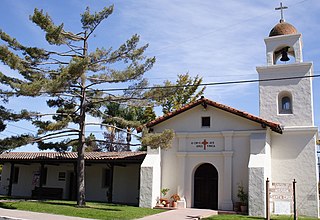 W
WThe Awaswas people, also known as Santa Cruz people, are one of eight divisions of the Ohlone Native Americans of Northern California. The Awaswas lived in the Santa Cruz Mountains and along the coast of present-day Santa Cruz County from present-day Davenport to Aptos.
 W
WThe Barona Group of Capitan Grande Band of Mission Indians of the Barona Reservation is a federally recognized tribe of Kumeyaay Indians, who are sometimes known as Mission Indians.
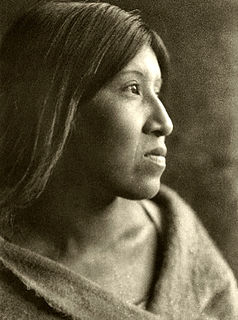 W
WThe Cahuilla, also known as ʔívil̃uqaletem or Ivilyuqaletem, are a Native American people of the various tribes of the Cahuilla Nation, living in the inland areas of southern California. Their original territory included an area of about 2,400 square miles (6,200 km2). The traditional Cahuilla territory was near the geographic center of Southern California. It was bounded to the north by the San Bernardino Mountains, to the south by Borrego Springs and the Chocolate Mountains, to the east by the Colorado Desert, and to the west by the San Jacinto Plain and the eastern slopes of the Palomar Mountains.
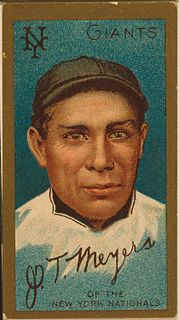 W
WThe Cahuilla Band of Cahuilla Indians of the Cahuilla Reservation is a federally recognized tribe of Native American Indians located in California. Their tribe originally came from Coachella Valley, through San Gorgonio Pass, to the San Jacinto Mountains. In 1875, their tribe had been relocated to modern day Anza.
 W
WThe California Genocide consisted of actions from the 18th to late 19th century by the Spanish, Mexican and especially United States federal, state, and local governments that resulted in the dramatic decrease of the indigenous population of California. Between 1849 and 1870—following the U.S. occupation of California in 1846—it is conservatively estimated that American colonists murdered some 9,500 California Natives, and acts of enslavement, kidnapping, rape, child separation and displacement were widespread, encouraged, carried out by and tolerated by state authorities and militias.
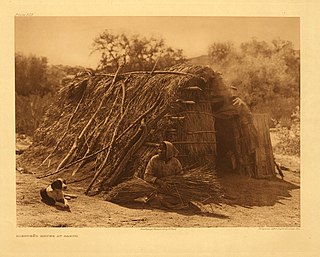 W
WThe Campo Indian Reservation is home to the Campo Band of Diegueño Mission Indians, also known as the Campo Kumeyaay Nation, a federally recognized tribe of Kumeyaay people in the southern Laguna Mountains, in eastern San Diego County, California. The reservation was founded in 1893 and is 16,512 acres (66.82 km2).
 W
WThe Chalon people are one of eight divisions of the Ohlone (Costanoan) people of Native Americans who lived in Northern California. Chalon is also the name of their spoken language, listed as one of the Ohlone languages of the Utian family. Recent work suggests that Chalon may be transitional between the northern and southern groups of Ohlone languages.
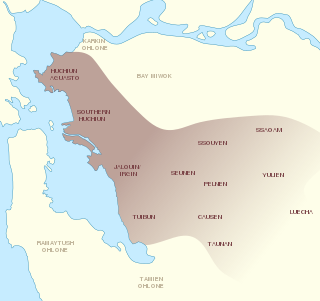 W
WThe Chochenyo are one of the divisions of the indigenous Ohlone (Costanoan) people of Northern California. The Chochenyo reside on the east side of the San Francisco Bay, primarily in what is now Alameda County, and also Contra Costa County, from the Berkeley Hills inland to the western Diablo Range.
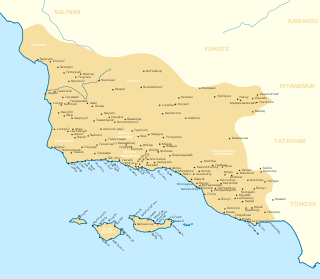 W
WThe Chumash are a Native American people who historically inhabited the central and southern coastal regions of California, in portions of what is now San Luis Obispo, Santa Barbara, Ventura and Los Angeles counties, extending from Morro Bay in the north to Malibu in the south. They also occupied three of the Channel Islands: Santa Cruz, Santa Rosa, and San Miguel; the smaller island of Anacapa was likely inhabited seasonally due to the lack of a consistent water source.
 W
WCoast Miwok are an indigenous people that was the second-largest group of Miwok people. Coast Miwok inhabited the general area of modern Marin County and southern Sonoma County in Northern California, from the Golden Gate north to Duncans Point and eastward to Sonoma Creek. Coast Miwok included the Bodega Bay Miwok, from authenticated Miwok villages around Bodega Bay, and the Marin Miwok.
 W
WThe Cupeño are a Native American tribe of Southern California. Their name in their own language is Kuupangaxwichem
 W
WThe Esselen are a Native American people belonging to a linguistic group in the hypothetical Hokan language family, who are indigenous to the Santa Lucia Mountains of the region South of the Big Sur River now known as Big Sur in Monterey County, California. Prior to Spanish colonization, they lived seasonally on the coast and inland, surviving off the plentiful seafood during the summer and acorns and wildlife during the rest of the year. Experts estimate there were from 100 to 200 individuals living in the steep, rocky region at the time of the arrival of the Spanish.
 W
WA fully feathered basket is a type of basket crafted by a select group of indigenous people of California who have traditionally resided in the coastal region of Northern California above San Francisco. These baskets are uniquely distinguished from other types of baskets in that the outside of the basket is entirely covered with a matted layer of feathers. They are highly collectible and renowned for their fine craftsmanship.
 W
WThe Santa Ysabel Band of Diegueño Mission Indians of the Santa Ysabel Reservation is a federally recognized tribe of Kumeyaay Indians, who are sometimes known as Mission Indians.
 W
WThe Jamul Indian Village of California is a federally recognized tribe of Kumeyaay Indians, who are sometimes known as Mission Indians.
 W
WThe Acjachemen are an indigenous people of California. They traditionally lived south of what is known as the Aliso creek and what was originally known as San Diego County [], San Diego counties. Acjachemen were referred to as Juaneño by Spanish colonizers following baptism at Mission San Juan Capistrano in the late eighteenth century. Today many contemporary members of the tribe who identify as descendants of the indigenous society living in the local San Juan and San Mateo Creek drainage areas prefer the term Acjachemen as their autonym, or name for themselves, in an effort to decolonize their history.
 W
WThe Kumeyaay, also known as Tipai-Ipai, are a tribe of Indigenous peoples of the Americas who live at the northern border of Baja California in Mexico and the southern border of California in the United States. Their Kumeyaay language belongs to the Yuman–Cochimí language family.
 W
WThe La Jolla Band of Luiseño Indians are a federally recognized tribe of Luiseño Indians, located in northern San Diego County, California. There are five other federally recognized tribes of Luiseño in southern California. La Jolla has four Tribally Owned Enterprises, The La Jolla Trading Post, The La Jolla Trading Post Casino, The Zip Zoom Zipline, and The La Jolla Indian Campground.
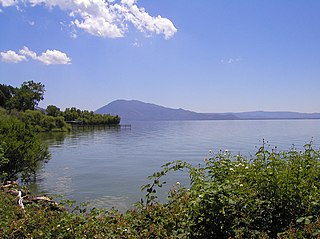 W
WThe Lake Miwok are a branch of the Miwok, a Native American people of Northern California. The Lake Miwok lived in the Clear Lake basin of what is now called Lake County.
 W
WThe Las Flores Estancia was established in 1823 as an estancia ("station"). It was part of the Spanish missions, asistencias, and estancias system in Las Californias—Alta California. Las Flores Estancia was situated approximately halfway between Mission San Luis Rey de Francia and Mission San Juan Capistrano. It is located near Bell Canyon on the Camp Pendleton Marine Corps Base ten miles south of the City of San Clemente in northern San Diego County, California. The estancia is also home to the architecturally significant National Historic Landmark Las Flores Adobe, completed in 1868.
 W
WFranciscan priests established 21 missions between 1769 and 1833 in Alta California, accompanied by military outposts. Their goal was to spread Christianity among the local Native Americans.
 W
WThe Luiseño or Payómkawichum are an indigenous people of California who, at the time of the first contacts with the Spanish in the 16th century, inhabited the coastal area of southern California, ranging 50 miles (80 km) from the present-day southern part of Los Angeles County to the northern part of San Diego County, and inland 30 miles (48 km). In the Luiseño language, the people call themselves Payómkawichum, meaning "People of the West." After the establishment of Mission San Luis Rey de Francia, "the Payómkawichum began to be called San Luiseños, and later, just Luiseños by Spanish missionaries due to their proximity to this San Luis Rey mission.
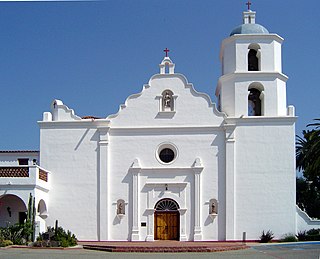 W
WMission San Luis Rey de Francia is a former Spanish mission in San Luis Rey, a neighborhood of Oceanside, California. This Mission lent its name to the Luiseño tribe of Mission Indians.
 W
WThe Morongo Band of Mission Indians is a federally recognized tribe in California, United States. The main tribal groups are Cahuilla and Serrano. Tribal members also include Cupeño, Luiseño, and Chemehuevi Indians. Although many tribes in California are known as Mission Indians, some, such as those at Morongo, were never a part of the Spanish Missions in California.
 W
WThe Ohlone, formerly known as Costanoans, are a Native American people of the Northern California coast. When Spanish explorers and missionaries arrived in the late 18th century, the Ohlone inhabited the area along the coast from San Francisco Bay through Monterey Bay to the lower Salinas Valley. At that time they spoke a variety of related languages. The Ohlone languages make up a sub-family of the Utian language family. Older proposals place Utian within the Penutian language phylum, while newer proposals group it as Yok-Utian.
 W
WThe Pala Indian Reservation is located in the middle San Luis Rey River Valley in northern San Diego County, California, east of the community of Fallbrook, and has been assigned feature ID 272502.
 W
WThe Patwin are a band of Wintun people native to the area of Northern California. The Patwin comprise the southern branch of the Wintun group, native inhabitants of California since approximately 500 AD.
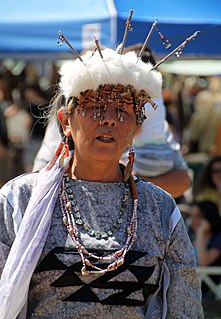 W
WThe Pomo are an indigenous people of California. The historical Pomo territory in Northern California was large, bordered by the Pacific Coast to the west, extending inland to Clear Lake, and mainly between Cleone and Duncans Point. One small group, the Northeastern Pomo of the Stonyford vicinity of Colusa County, was separated from the core Pomo area by lands inhabited by Yuki and Wintuan speakers.
 W
WThe Ramona Band of Cahuilla is a federally recognized tribe of Cahuilla Indians, located in Riverside County, California.
 W
WThe Salinan are a Native American tribe whose ancestral territory is in the southern Salinas Valley and the Santa Lucia Range in the Central Coast of California. Today, the Salinan governments are now working toward federal tribal recognition from the Bureau of Indian Affairs.
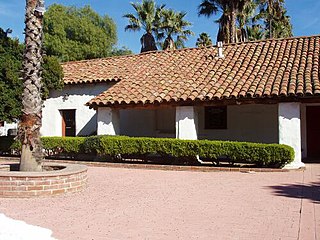 W
WThe San Antonio de Pala Asistencia, or the "Pala Mission", was founded on June 13, 1816 as an asistencia ("sub-mission") to Mission San Luis Rey de Francia, some twenty miles inland upstream from the latter mission on the San Luis Rey River. Pala Mission was part of the Spanish missions, asistencias, and estancias system in Las Californias—Alta California. Today it is located in the Pala Indian Reservation located in northern San Diego County, with the official name of Mission San Antonio de Pala. It is the only historic mission facility still serving a Mission Indian tribe.
 W
WThe San Pasqual Band of Diegueño Mission Indians of California is a federally recognized tribe of Kumeyaay Indians, who are sometimes known as Mission Indians.
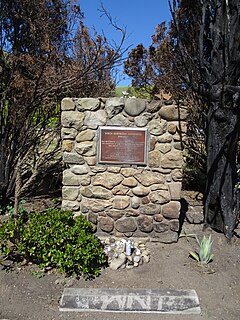 W
WThe Santa Gertrudis Asistencia, also known as the Santa Gertrudis Chapel, was an asistencia ("sub-mission") to the Mission San Buenaventura, part of the system of Spanish missions in Las Californias—Alta California. Built at an unknown date between 1792 and 1809, it was located approximately five miles from the main mission, inland and upstream along the Ventura River. The site was buried in 1968 by the construction of California State Route 33. Prior to the freeway's construction, archaeologists excavated and studied the site. A number of foundation stones were moved and used to create the Santa Gertrudis Asistencia Monument which was designated in 1970 as Ventura County Historic Landmark No. 11.
 W
WThe Serrano are an indigenous people of California. They use the autonyms of Taaqtam, meaning "people"; Maarrênga’yam, "people from Morongo"; and Yuhaviatam, "people of the pines." Today the Maarrênga'yam are enrolled in the Morongo Band of Mission Indians, and the Yuhaviatam are enrolled in the San Manuel Band of Mission Indians. Additionally, some Serrano people are enrolled in the Soboba Band of Luiseno Indians.
 W
WThe Mexican Secularization Act of 1833 was passed twelve years after Mexico won independence from Spain in 1821. Mexico feared Spain would continue to have influence and power in California because most of the Spanish missions in California remained loyal to the Roman Catholic Church in Spain. As the new Mexican republic matured, calls for the secularization ("disestablishment") of the missions increased. Once fully implemented, the secularization act, called the Decree for the Secularisation of the Missions of the Californias, took away much of the California Mission land and sold it or gave it away in large grants called ranchos.
 W
WThe Spanish missions in California comprise a series of 21 religious outposts or missions established between 1769 and 1833 in what is now the U.S. state of California. Founded by Catholic priests of the Franciscan order to evangelize the Native Americans, the missions led to the creation of the New Spain province of Alta California and were part of the expansion of the Spanish Empire into the most northern and western parts of Spanish North America.
 W
WThe Tamyen people are one of eight linguistic divisions of the Ohlone (Costanoan) people groups of Native Americans who lived in Northern California. The Tamyen lived throughout the Santa Clara Valley. The use of the name Tamyen is on record as early as 1777, it comes from the Ohlone name for the location of the first Mission Santa Clara on the Guadalupe River. Father Pena mentioned in a letter to Junipero Serra that the area around the mission was called Thamien by the native people. The missionary fathers erected the mission on January 17, 1777 at the native village of So-co-is-u-ka.
 W
WThe Tongva are an Indigenous people of California from the Los Angeles Basin and the Southern Channel Islands, an area covering approximately 4,000 square miles (10,000 km2). In the precolonial era, the people lived in as many as 100 villages and primarily identified by their village name rather than by a pan-tribal name. During colonization, the people were referred to as Gabrieleño and Fernandeño, names derived from the Spanish missions built on their land: Mission San Gabriel Arcángel and Mission San Fernando Rey de España. The name Tongva is the most widely circulated name and gained popularity in the late 20th century. Others choose to identify as Kizh and disagree over use of the term Tongva.
 W
WThe Viejas Group of Capitan Grande Band of Mission Indians of the Viejas Reservation, also called the Viejas Band of Kumeyaay Indians, is a federally recognized tribe of Kumeyaay Indians.
 W
WThe Wappo are an indigenous people of northern California. Their traditional homelands are in Napa Valley, the south shore of Clear Lake, Alexander Valley, and Russian River valley. They are distantly related to the Yuki people, from which they seem to have diverged at least 500 years ago. Their language, Wappo, has been influenced by the neighboring Pomo, who use the term A'shochamai or A'shotenchawi, meaning "northeners", to refer to the Wappo.
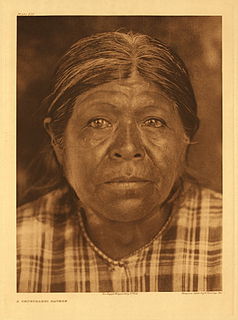 W
WThe Yokuts are an ethnic group of Native Americans native to central California. Before European contact, the Yokuts consisted of up to 60 tribes speaking several related languages.